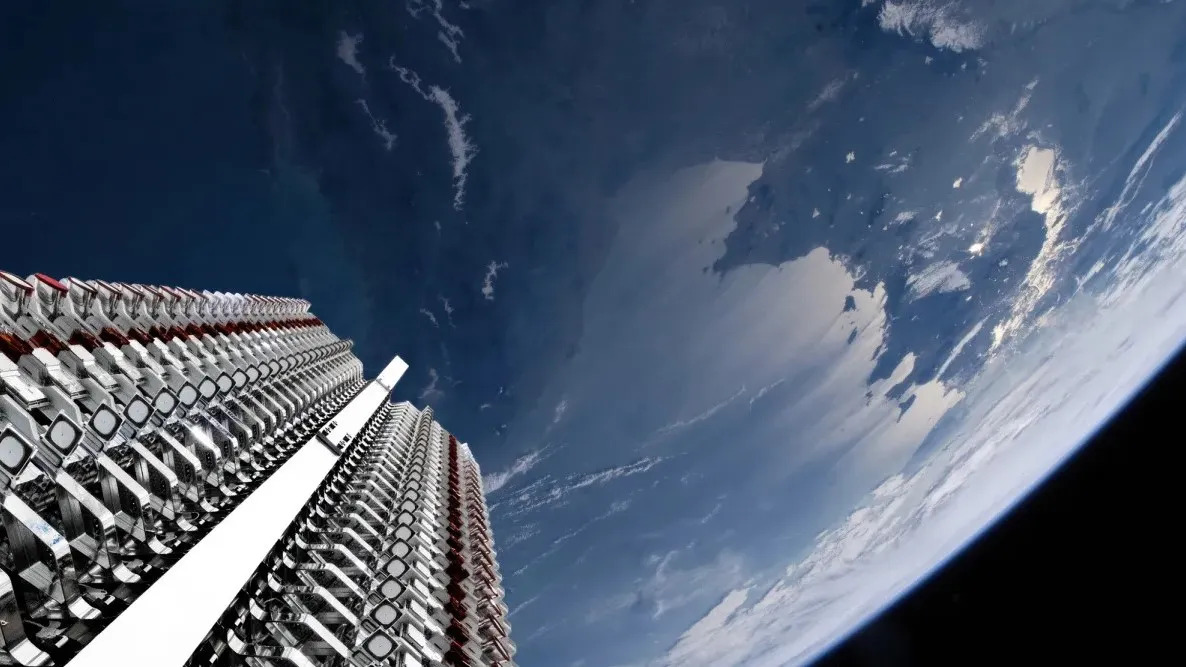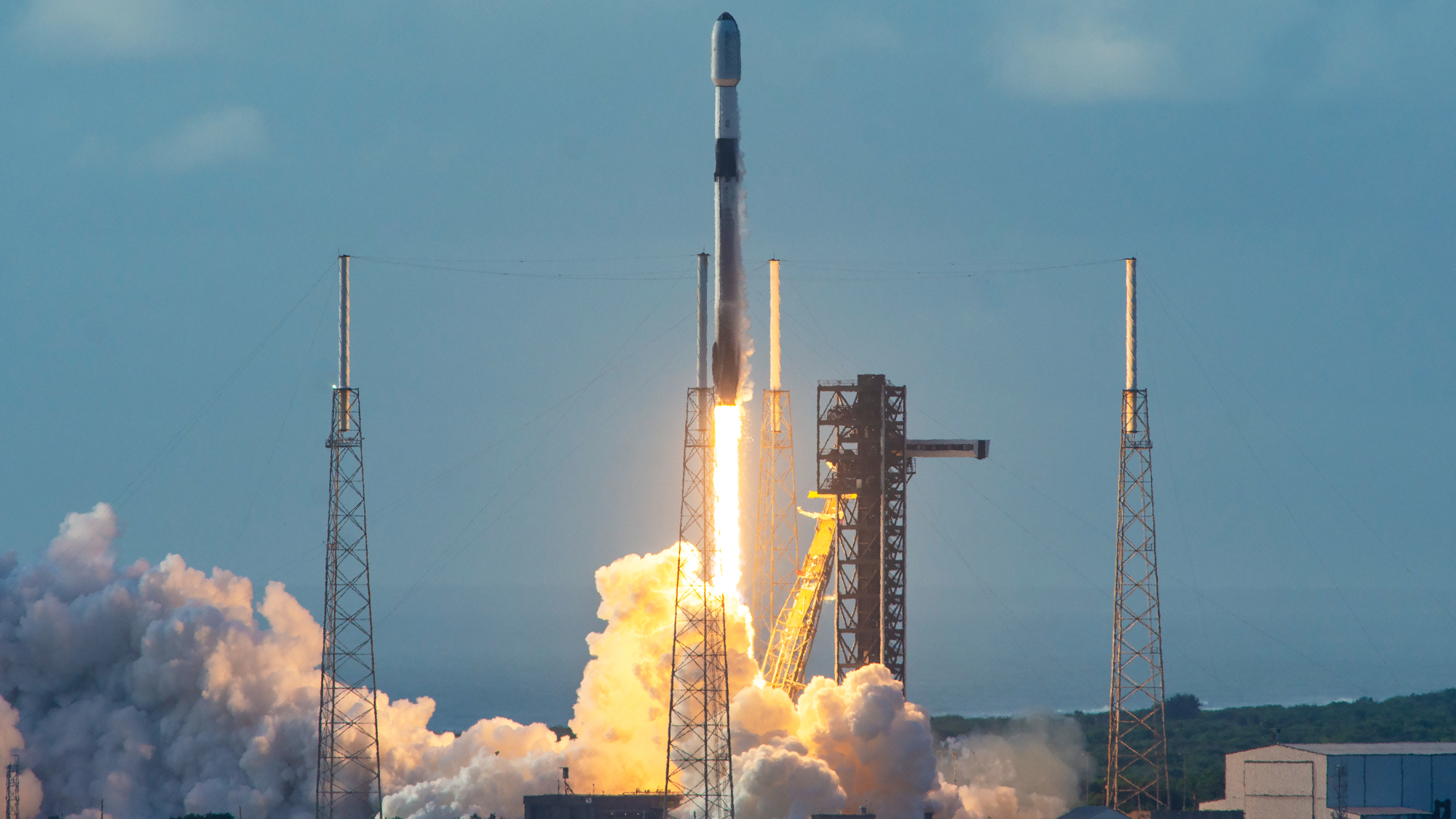Dangerous satellite air pollution exists in a legal loophole
"If we don't do anything, we will see the impact globally within the next 10 years."

Air pollution from satellites burning up in Earth's atmosphere could become the world's next big environmental problem — but the tricky form of contamination seems to evade the reach of both international space treaties and Earth-focused environmental laws. So, some researchers are suggesting a solution: Maybe chemicals produced during satellite reentries should be incorporated in the 1987 Montreal Protocol which bans certain substances that can harm our planet's protective ozone layer.
Satellites have been burning in Earth's atmosphere since the beginning of the space age, but for decades, nobody really paid much attention to the issue. That changed when the era of megaconstellations arrived.
In the past, old spacecraft made up barely a drop among the thousands of tons of meteorites falling to Earth every year. However, the rise of megaconstellations, which can comprise hundreds, or even thousands, of satellites, meant the proportion of human made space debris began to rise.
A growing problem
For example, up to two hundred metric tons of dead satellites evaporated in Earth's atmosphere in 2023, according to estimates presented at the workshop on Protecting Earth and Outer Space from the Disposal of Spacecraft and Debris held at the University of Southampton in the U.K. on Sept. 23 and Sept. 24.
Related: Satellite megaconstellations threaten ozone layer recovery, study confirms
In comparison, more than 16,000 metric tons of meteorites burn up in Earth's atmosphere every year. By 2033, the annual amount of incinerated satellite trash could reach 3,600 metric tons — that's more than 20% of the amount of natural space rocks, Andrew Bacon, chief technology officer at in-orbit manufacturing firm Space Forge, said at the workshop.
This expected increase in human-made space debris concerns scientists because, unlike meteorites, satellites are made of alloys containing aluminum and other metals that oxidize into chemical compounds not otherwise present in the atmosphere. The most concerning of those is aluminum oxide, or alumina, a white powder that acts like "sunscreen" in the atmosphere preventing sunlight from penetrating closer to the surface.
Breaking space news, the latest updates on rocket launches, skywatching events and more!
"It reflects sunlight, which means it can reduce the amount of energy absorbed by Earth," Minkwan Kim, an associate professor of astronautics at the University of Southampton in the U.K. and one of the workshop organizers, told Space.com
That might sound like a good thing, as this sunscreen effect could, in theory, slow down the progressing climate change — but Kim cautions that unwanted consequences of such human-induced cooling on the planet's climate cannot be predicted.
Ozone depletion
Alumina is also known to damage ozone, the gas that prevents harmful UV radiation from reaching Earth's surface. The destruction of our planet's ozone layer was major news in the 1980s, when scientists discovered a gaping hole in it above Antarctica. Substances rich in chlorine and bromine, found in aerosol sprays and refrigerants, were found responsible for the disaster. Then, in 1987, the Montreal Protocol banned those substances and paved the way for the ozone layer's gradual recovery. (It has indeed been recovering since then.)
Going off of that success story, Kim believes global legislators should start thinking about amending the Montreal Protocol to include chemicals that come from satellite pollution — like alumina — to prevent the polar ozone holes from reopening as well as other environmental consequences we may not even know about yet.
A modeling study, published in the journal Geophysical Research Letters in June, found that ozone depletion caused by alumina from incinerated satellites could get "potentially significant" if the number of satellites launched into orbit continues to grow as expected.
"We think we should try to do something similar that we did in the past to protect the ozone layer," Kim said. "For example, by adding these chemicals from satellite ablations to [the Montreal Protocol]."
No regulation
Speaking at the workshop, Rachael Craufurd Smith, a space law expert at the University of Edinburgh, said none of the existing international space treaties have provisions to protect the planet from the potential environmental impacts of air pollution related to satellite reentries.
The Liability Convention, signed in 1972, holds states fully accountable in case spacecraft launched from their territory cause damage on the territory of other countries. The convention also covers damage to aircraft and other satellites in orbit. The 1967 Outer Space Treaty, on the other hand, binds countries to prevent Earth-based contamination of other celestial bodies and to protect Earth from extraterrestrial matter contamination. Neither document, however, makes any mention of wider environmental consequences of space activities on Earth, Smith said.
Micheal Hennesey, a lecturer in international environmental law who also spoke at the workshop, said "standards derived from international environmental law" could help "compensate for the lack of outer space legal provisions on the environment."
Beyond the Montreal Protocol, Hennesey also mentioned the Convention on Long-Range Transboundary Air Pollution, which regulates air pollution that originates in other states than those it affects. Both documents would require amendments as neither covers aluminum oxides or effects of human-induced processes in the upper atmosphere.
Fabio Tronchetti, an associate professor of law at Northumbria University in the U.K., warned that international lawmakers, such as United Nations member states, take a long time to pass new regulations and are subject to geopolitical influences. He recommended the space industry begin looking for their own solutions.
That, according to other experts present at the workshop, might be the only viable way forward.
According to Kim, the world may not have time to waste downplaying the satellite pollution problem. Because satellites burn at altitudes between 50 and 37 miles (80 and 60 kilometers), the particles produced during the burn-up might take decades, maybe centuries, to fall back to Earth.
"If we don't do anything, with the current growth rate of burning satellites, we will definitely see the impact globally within the next 10 years," said Kim. "We need to initiate discussions as soon as possible. With space debris, it took us 20 or 30 years to define a solution. With [the satellite air pollution] problem, if we move on the same kind of timescale, it might be too late."
Join our Space Forums to keep talking space on the latest missions, night sky and more! And if you have a news tip, correction or comment, let us know at: community@space.com.

Tereza is a London-based science and technology journalist, aspiring fiction writer and amateur gymnast. Originally from Prague, the Czech Republic, she spent the first seven years of her career working as a reporter, script-writer and presenter for various TV programmes of the Czech Public Service Television. She later took a career break to pursue further education and added a Master's in Science from the International Space University, France, to her Bachelor's in Journalism and Master's in Cultural Anthropology from Prague's Charles University. She worked as a reporter at the Engineering and Technology magazine, freelanced for a range of publications including Live Science, Space.com, Professional Engineering, Via Satellite and Space News and served as a maternity cover science editor at the European Space Agency.
